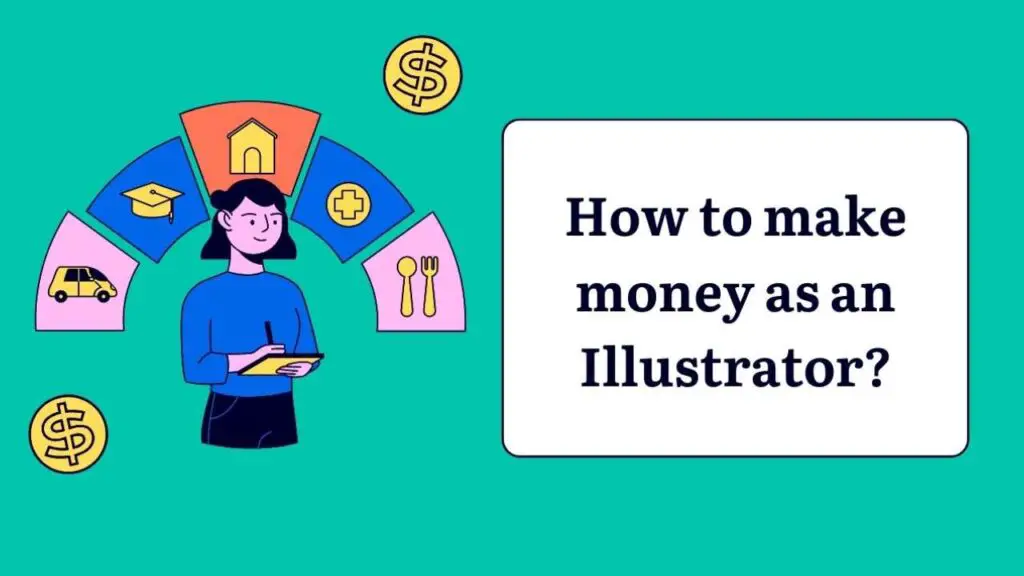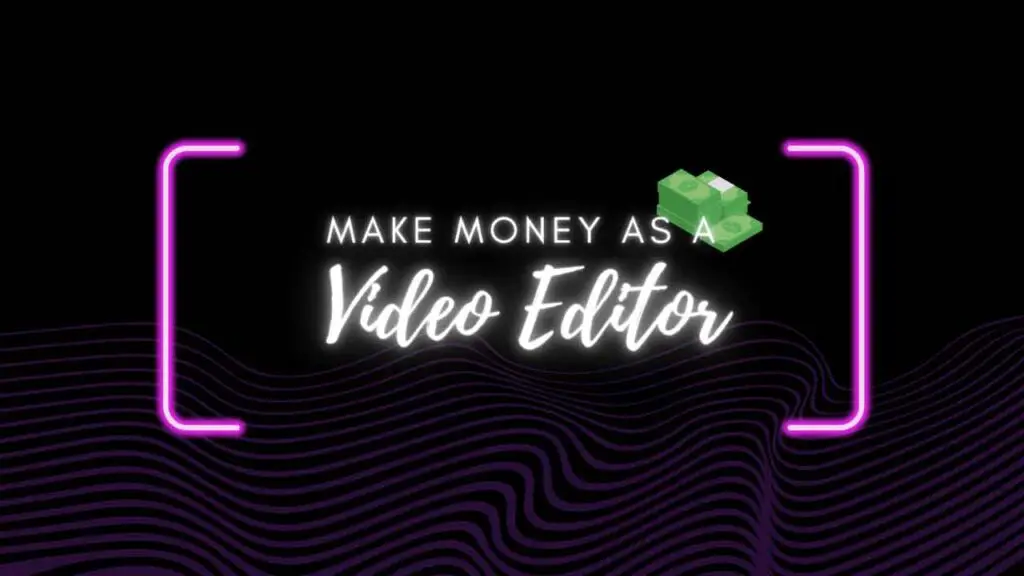THIS ARTICLE MAY CONTAIN AFFILIATE MARKETING LINKS! IN CASE YOU MAKE A PURCHASE THROUGH ONE OF THE LINKS, WE'LL GET A SMALL COMMISSION. WITH NO EXTRA CHARGES TO YOU. THANKS!!
Making money as an illustrator can be a rewarding journey filled with artistic freedom and financial stability. Whether you’re an aspiring artist or a seasoned pro looking for new ideas, We’ve got some tips to help you turn your passion for illustration into a thriving career. Let’s explore how to make money as an illustrator?
How to make money as an Illustrator?
Diversify Your Portfolio:
Diversifying your illustration portfolio is a crucial step to gaining more opportunities and attracting a broader range of clients. Here’s a closer look at why and how to diversify your portfolio for success in the world of illustration.
Why Diversify Your Portfolio?
- Broaden Your Client Base: Different clients have different needs. By showcasing a variety of styles and subjects in your portfolio, you can appeal to a broader range of clients, from children’s book authors to businesses seeking unique branding.
- Adapt to Market Trends: Artistic trends come and go. What’s popular today may not be in demand tomorrow. Diversification helps you stay relevant by allowing you to adapt to changing market preferences.
- Discover Your Niche: Experimenting with different styles and subjects can help you discover your true artistic passion and niche. This can lead to more fulfilling and lucrative projects.
How to Diversify Your Portfolio?
- Experiment with Styles: Try your hand at various artistic styles, from realism to abstract, minimalism to intricate detail. This can show your versatility and attract clients looking for specific aesthetics.
- Explore Different Subjects: Don’t limit yourself to one subject matter. Illustrate everything from portraits to landscapes, animals to machinery. This demonstrates your ability to handle a wide range of projects.
- Vary the Medium: If you typically work digitally, consider incorporating traditional media like watercolors, ink, or acrylics. This diversity can add a unique touch to your portfolio.
- Showcase Personal Projects: Personal projects can be a treasure trove for diversification. They allow you to freely explore what you’re passionate about, and potential clients can see your creative interests beyond commissions.
- Include Collaborations: If you’ve collaborated with others, display these projects in your portfolio. They can show your ability to work as part of a team and tackle diverse assignments.
- Share Your Progress: Include works from different stages of your career to demonstrate your growth as an artist. This can be particularly inspiring to potential clients.
- Get Feedback: Don’t hesitate to seek feedback from peers and mentors. They can offer insights on what areas of your portfolio might benefit from more diversification.
- Update Regularly: Keep your portfolio up to date. Remove older pieces that no longer represent your current skills and style, and add fresh, diversified work.
Build an Online Presence:
Building a strong online presence is paramount for illustrators in today’s digital age. It’s your virtual gallery and the gateway to connecting with potential clients and fellow artists. Here’s a comprehensive guide on how to effectively establish your online presence as an illustrator.
- Create Your Own Website: Your website is your digital portfolio and the hub of your online presence. Use platforms like Wix, Squarespace, or WordPress to build a professional, visually appealing site. Ensure it’s easy to navigate and showcases your best work. Don’t forget to include an ‘About Me’ page to let visitors know your story and artistic journey.
- Leverage social media: Social media is a powerful tool for exposure. Platforms like Instagram, Twitter, Facebook, and Pinterest are great for sharing your art and engaging with your audience. Consistently post high-quality content, use relevant hashtags, and interact with your followers.
- Join Art Communities: Participate in art-focused online communities like DeviantArt, Behance, or ArtStation. Share your work and engage with other artists. These platforms can help you reach a niche audience interested in art.
- Start a Blog: Since you’re into blogging, consider incorporating a blog section on your website. Share insights about your artistic process, tutorials, or commentary on the art industry. Regular, quality blog posts can attract readers and improve your website’s SEO.
- YouTube and Video Platforms: If you’re comfortable on camera, consider starting a YouTube channel or using platforms like TikTok to create short art-related videos. Sharing your artistic process, time-lapses, or tutorials can attract a different audience and boost your online presence.
- Online Portfolios: Besides your website, maintain profiles on art portfolio websites like Behance and ArtStation. These platforms are frequented by art enthusiasts and potential clients, helping you reach a wider audience.
- Email Marketing: Building an email list is an invaluable tool for maintaining a direct connection with your audience. Offer a newsletter subscription on your website and send regular updates, exclusive content, and promotions to your subscribers.
- Engage and Collaborate: Engage with your audience by responding to comments and messages. Collaborate with other artists, influencers, or brands in your niche to expand your reach and create opportunities for cross-promotion.
- Online Store: If you sell your art or merchandise, create an online store on your website or use platforms like Etsy, Redbubble, or Society6. Make sure it’s user-friendly and secure.
- Monitor Your Analytics: Keep an eye on website and social media analytics to understand what works and what doesn’t. Adjust your strategy based on data, such as which posts get the most engagement or what time of day your audience is most active.
- Stay Consistent: Consistency is key to maintaining your online presence. Regularly update your website and social media, engage with your audience, and continue producing high-quality art.
- Protect Your Work: Don’t forget to watermark your art and protect your intellectual property. Copyright your work when necessary, and be vigilant about art theft.
Network and Collaborate:
Networking and collaboration are two powerful strategies for illustrators to expand their horizons and open doors to exciting opportunities. Let’s dive into how you can effectively network and collaborate to enhance your career as an illustrator:
Networking:
- Online Communities: Join online forums, social media groups, and art-related websites. Platforms like DeviantArt, Behance, or even Reddit’s art communities are great places to start. Engage in discussions, share your work, and build connections.
- Art Events and Conventions: Attend art exhibitions, conventions, and local art events. These gatherings offer an excellent chance to meet fellow artists, potential clients, and industry professionals. Exchange business cards or social media handles to stay connected.
- Collaborative Projects: Participate in collaborative projects within your niche. Look for online groups or forums where artists team up to create joint artwork. Collaboration not only expands your network but can lead to exciting creative projects.
- Art Classes and Workshops: Enroll in art classes or workshops in your area or online. These provide a structured environment for networking with both fellow artists and instructors. You can gain valuable insights and contacts in these settings.
- Mentorship: Seek out experienced artists who can mentor you or offer guidance. Mentorship relationships often evolve into strong networking connections. Don’t be afraid to reach out to artists you admire for advice.
Collaboration:
- Online Collaboration: In the digital age, you can collaborate with artists from around the world. Working on joint projects with artists in different countries not only expands your skill set but also broadens your audience.
- Cross-Promotion: Collaborate with artists who have a similar audience but a different style. Create joint art, and cross-promote on your respective social media. This can introduce your work to a whole new set of potential clients and fans.
- Client Collaboration: If you have clients who need multiple types of illustrations, consider collaborating with other illustrators. This way, you can tackle larger projects together, meeting the client’s needs more efficiently.
- Art Challenges: Participate in art challenges or competitions. Many of these are collaborative in nature and offer a chance to work with other artists. For instance, Inktober is a popular annual challenge that many artists collaborate on.
- Art Exhibitions: Collaborate with fellow artists to host joint art exhibitions. These events can attract more visitors and art enthusiasts who are interested in the work of multiple artists.
- Online Courses and Tutorials: Consider partnering with other artists to create online courses or tutorials. This not only combines your expertise but also helps you reach a wider audience of aspiring artists.
- Freelance Projects: Share freelance projects with other illustrators when you have too much on your plate. Collaborating in this way helps you deliver quality work while managing your workload.

- How to Make Money as an Animator?
- How to make money as a Photographer?
- How to make money as a Video Editor?
Freelancing and Commissions:
Freelancing and taking commissions are two fundamental ways for illustrators to turn their passion into a profitable venture. Whether you’re just starting or looking to expand your client base, here’s how to navigate the world of freelancing and commissions effectively:
Freelancing:
- Online Freelance Platforms: Platforms like Upwork, Freelancer, and Fiverr are excellent places to start your freelancing journey. Create a compelling profile that showcases your skills, portfolio, and experience. Bid on relevant projects, making sure to tailor your proposals to the specific needs of each client.
- Personal Website: Your website can also serve as a platform for freelancing. Create a dedicated page for your services, complete with pricing, turnaround times, and a contact form. Promote your website through social media and other channels to attract clients.
- Networking: As mentioned earlier, networking is key. Attend art events, conventions, and online communities to connect with potential clients. Word of mouth and recommendations from your network can lead to freelancing opportunities.
- Quality and Consistency: In the competitive world of freelancing, your reputation is everything. Consistently deliver high-quality work, meet deadlines, and maintain open communication with your clients. Happy clients are more likely to return and refer you to others.
- Specialize: Consider specializing in a particular niche or style. Being an expert in a specific area can make you more attractive to clients seeking those skills.
- Pricing: Set competitive and fair pricing. Research what other illustrators with similar skills charge, and base your rates on your experience and the complexity of the project. Consider offering different pricing tiers to accommodate various budgets.
- Contracts: Always use written contracts that outline project details, deadlines, payment terms, and any revisions. Contracts protect both you and the client.
Commissions:
- Establish Clear Terms: When taking commissions, be transparent about what clients can expect. Explain your process, timeline, pricing, and the rights they will have to the artwork. This clarity helps manage expectations.
- Portfolio Samples: Share a diverse range of examples from your portfolio to give potential clients an idea of your style and capabilities. Be sure to include any relevant commissioned work you’ve completed in the past.
- Payment and Deposits: Decide on your payment structure. Many artists require a deposit upfront before starting a commission to secure the client’s commitment. Ensure you have a reliable payment method in place.
- Communication: Maintain open lines of communication with your clients throughout the commission process. Share progress updates, ask for feedback, and make revisions as necessary to ensure the client is satisfied.
- Deliver on Time: Adhere to the agreed-upon deadlines. If unforeseen circumstances arise that might delay your work, communicate this to the client promptly.
- Promote Your Services: Use your online presence, website, and social media to promote your commission services. Let your followers and audience know that you’re open for commissions and showcase your availability.
- Client Reviews: Encourage satisfied clients to leave reviews or testimonials on your website or social media. Positive feedback builds trust and credibility with potential clients.
Sell Merchandise:
Selling merchandise as an illustrator can be a fantastic way to monetize your art and connect with a wider audience. Whether you want to sell prints, apparel, or other creative items, here’s a step-by-step guide on how to get started:
- Choose Your Merchandise: Decide what type of merchandise you want to create. Common options include art prints, posters, apparel (T-shirts, hoodies, etc.), stickers, mugs, phone cases, and more. Your choice should align with your style and what your audience is likely to purchase.
- Create High-Quality Art: Ensure your artwork is of the highest quality. High-resolution images are essential, as they will be used for printing. Your art should be in a format suitable for the specific type of merchandise you plan to sell (e.g., vector files for apparel printing, high-res images for prints).
- Printing Options: Research printing options. You can print merchandise yourself if you have the equipment and space, but most artists prefer to use professional printing services. Many print-on-demand companies like Printful, Printify, and Redbubble can handle the printing, shipping, and even customer service for you.
- Create an E-Commerce Platform: Build or set up an e-commerce platform to sell your merchandise. You can use your website, platforms like Etsy, or integrate a shopping cart system into your social media profiles. Make sure your online store is user-friendly and visually appealing.
- Design Your Products: Use your art to create mock-ups of your merchandise. Ensure your designs fit well on the chosen products and look appealing. Be mindful of colors, sizes, and placement on apparel, for example.
- Pricing and Margins: Calculate your costs and set a reasonable retail price. Consider the cost of production, platform fees, and your desired profit margin. Be competitive but fair in your pricing.
- Shipping and Fulfillment: If you’re handling shipping and fulfillment yourself, establish a streamlined process. If you’re using a print-on-demand service, they’ll handle this for you. Ensure your shipping rates are competitive and reasonable.
- Marketing and Promotion: Promote your merchandise through your website, social media, and email newsletters. Share high-quality images of your products, provide behind-the-scenes insights, and engage with your audience. Leverage your existing online presence to reach potential customers.
- Customer Service: Provide excellent customer service. Respond to inquiries promptly, handle issues professionally, and ensure your customers have a positive experience.
- Track Sales and Analytics: Keep an eye on sales and analytics. Understand which products are selling best, where your customers are coming from, and adapt your marketing strategy accordingly.
- Legal and Licensing: Ensure that you have the proper licenses or permissions for any copyrighted material you’re using in your artwork. This is essential to avoid legal issues.
- Quality Control: Regularly inspect the quality of your merchandise. If you’re using a print-on-demand service, order sample products to ensure they meet your standards.
Crowdfunding and Patrons:
Crowdfunding and securing patrons are alternative approaches that can provide financial support for your work as an illustrator. These methods allow you to gain the necessary resources to pursue your creative projects and maintain your artistic independence. Here’s a guide on how to navigate crowdfunding and patronage as an illustrator:
Crowdfunding:
- Choose the Right Platform: Select a crowdfunding platform that aligns with your project. Kickstarter, Indiegogo, and Patreon are popular options. Kickstarter is great for one-time projects, while Patreon is more suitable for ongoing support.
- Plan Your Campaign: Define the scope of your project, set clear goals, and calculate the budget required. Craft a compelling campaign story that explains your project’s purpose and why it’s worth supporting.
- Rewards and Tiers: Offer attractive rewards to backers at different contribution levels. Ensure that the rewards are relevant to your project and the interests of your audience. Create tiers that appeal to various levels of commitment.
- Engage Your Audience: Promote your crowdfunding campaign across social media, your website, and through your email list. Engage with your audience by sharing updates, answering questions, and fostering a sense of community around your project.
- Fulfill Commitments: Once your campaign is successful, fulfill your commitments to backers promptly and with high quality. Be transparent about your progress and challenges.
- Express Gratitude: Show appreciation to your backers. Personalized thank-you messages, behind-the-scenes content, and exclusive updates can go a long way in fostering a strong bond with your supporters.
Patronage:
- Select a Patronage Platform: Platforms like Patreon, Ko-fi, and Buy Me a Coffee provide options for artists to accept recurring payments from patrons who support your work.
- Describe Your Work: On your patronage profile, clearly explain your artistic vision and the projects you’re working on. Potential patrons need to understand what they’re supporting.
- Offer Patron-Only Perks: Provide exclusive content, such as early access to your work, behind-the-scenes insights, or personal messages, to patrons as a way of saying thank you.
- Promote Your Patronage: Promote your patronage page on social media, your website, and other platforms where you have a presence. Encourage your audience to support you and share the benefits of patronage.
- Consistent Updates: Keep your patrons engaged with regular updates and exclusive content. Make them feel like valued members of your community.
- Acknowledge Patrons: Show gratitude to your patrons by mentioning them in your work, giving them special recognition, or even hosting patron-only events.
Remember, there’s no one-size-fits-all approach to making money as an illustrator. It’s about finding the path that works best for you and your unique style. Keep your passion alive, stay open to new possibilities, and enjoy the journey of turning your creative talents into a thriving career.







